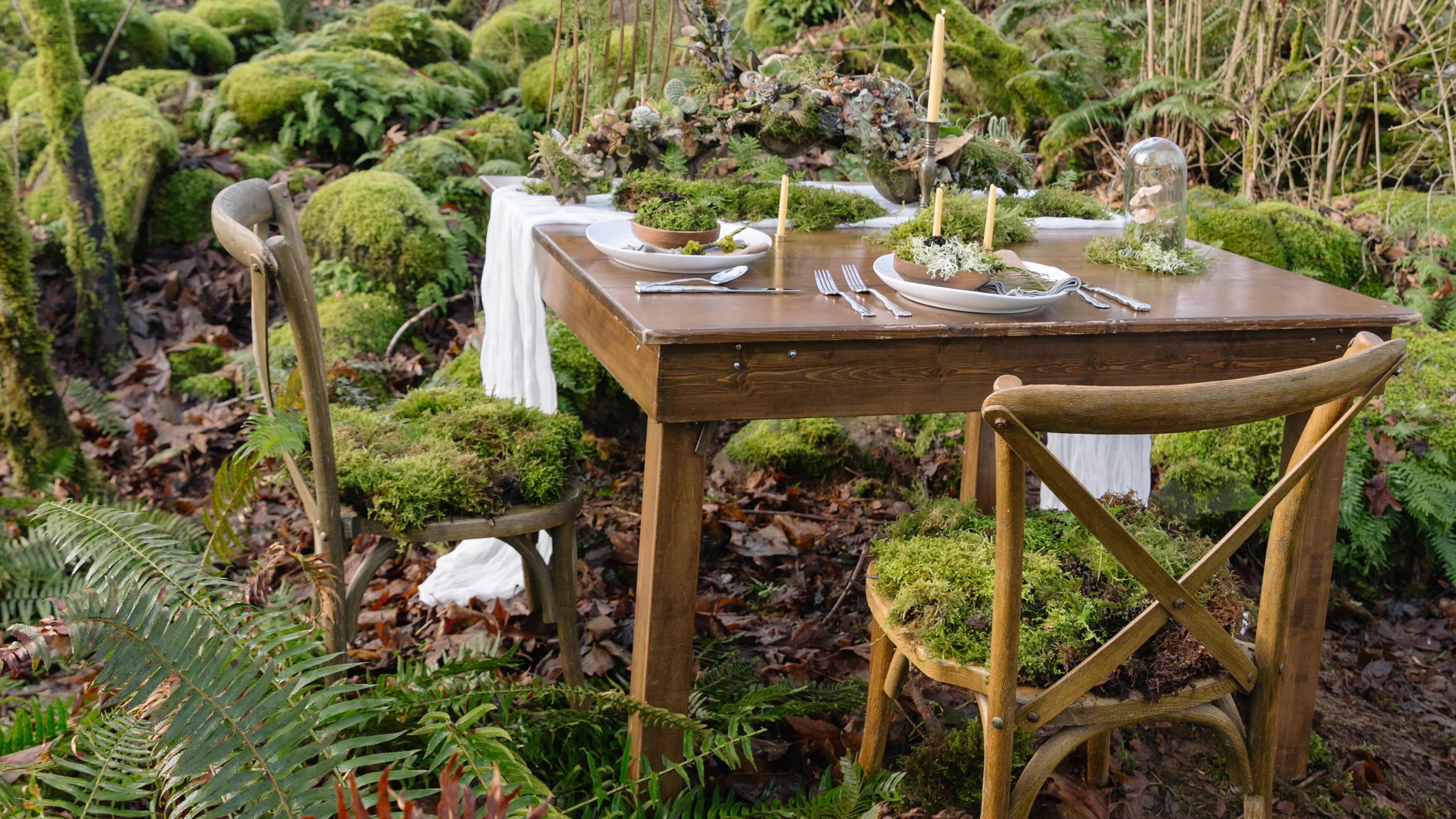If we’re lucky, our curiosity never leaves us. It’s an impulse that encourages us forward, allowing something to reveal itself. That’s how Françoise Weeks approaches every small texture, from lichen-covered branches to logs that ground her work known as Woodland textures, a collection of wild landscapes sculpted into botanical arrangements, ranging from table centerpieces to blooming vertical wall hangings.
Looking at Weeks’ designs is like catching flora in motion—bent angular twigs that reach, moss that drips, succulents that unfurl from the crevices. These stunning arrangements, along with tips on how to make your own, are featured in her newest book, Wonder of the Woodlands: The Art of Seeing and Creating with Nature (Clarkson Potter, 241 pages, $30).
Born and raised in Belgium but a longtime Portlander, Weeks, 72, spent many years of her career working primarily with floral arrangements. It wasn’t until 2007 that the idea for Woodlands sparked. “It was born from a 45-year-old childhood memory,” Weeks says.
As a kid, Weeks spent summers in Switzerland with her family, taking daily hikes. At the end of each path, she and her sister would find wildflowers and bark sheddings and weave them into a gift for their mother. When the memory hit Weeks decades later, she happened to be at a photo shoot and mentioned it offhandedly to the art director and photographer. Both told her they wanted to see those kinds of arrangements.
“As a total introvert, I said, ‘Who cares, why would I do that?’” Weeks says, laughing.
Still, she tried it. A visit to the flower market produced a single log, which she decorated with a few textures—kiwi vine succulents, seedpods of poppies—snapped photos, and snuck the images into her portfolio. The unusual arrangement caught the eye of a bride and her fiancé, Woods, which pushed Weeks to expand and make a few more. That’s all it took. “I was hooked,” Weeks says. “Woodlands gave me new eyes. I started to see things I’d never noticed before.”
The botanical arrangements can be anything—headpieces and corsages for weddings, mossy seat cushions for dining outdoors. Nowadays, Weeks does less wedding work and more teaching, traveling around the country to hold workshops, including some here in Portland. But she’s not teaching methods, she’s helping people follow their own intuition.
“Oftentimes students don’t like to hear that because they like rules,” Weeks says. “‘One, two, three’—yeah, it doesn’t work that way.”
Nearly every piece takes Weeks hours to make in her Hosford-Abernethy studio, a small room packed with stacks of succulents and mushrooms drying on paper towels, scraggly twigs stacked in produce flats, and palm fronds dried and curved like bird wings.
“I know I have a frame, and I know I have a piece of wood—that’s all I know,” Weeks says. “It’s literally whatever catches my eye. I don’t have a plan, and that’s the fun part. I get totally lost.”
In Wonder of the Woodlands, Weeks opens the reader’s eyes to nature’s bountiful textures, mixing practical with magical—tips on building fairy houses and mushroom towers, how to make a mossy tablescape or bark troughs. She also highlights the sustainable element of Woodlands—while flowers wilt, driftwood and acorns can be reused over and over; birch sheddings can cover old recycled plastic containers that serve as the base for an arrangement. There’s the cost sustainability as well—twigs and moss pulled from the yard are far more affordable than fresh-cut bouquets from the market.
Pulling from nature surrounding you, there’s the inevitable question of how to do so responsibly. The book includes information on field guides and how to approach foraging.
“When I go for a hike, I get inspired with my eyes, I never bring a bag to gather,” Weeks says. That being said, Weeks says it’s OK to take a few things from a walking path (depending on the rules of the property you’re on), but, “Don’t pick them all up because if everybody picked up everything they saw, that really wouldn’t be a good idea,” Weeks says.
But before you start picking anything up, you’ve got to see it.
“First thing, you have to notice,” Weeks notes. “Just follow this,” she says, tapping her heart.
GO: Woodland Jewelry Class, 2754 SE 33rd Place, francoiseweeks.com. 6–9 pm Tuesday, May 21. $125.
